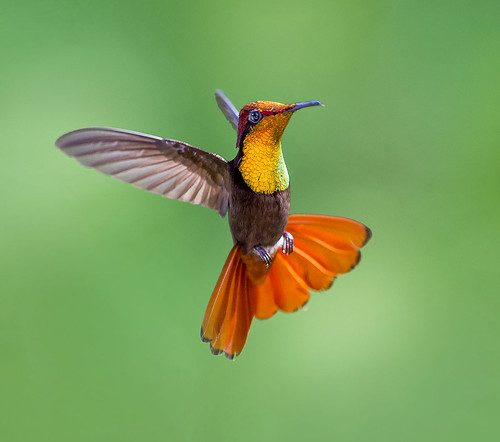
From Tiny Egg to Graceful Aviator: The Mesmerizing Life Cycle of the Ruby-Topaz Hummingbird Unveiled
The Ruby-topaz Hummingbird (Chrysolampis mosquitus) is a stunning bird that is found in the tropical regions of Central and South America.
It is known for its brilliant plumage, which features a bright ruby-red throat and crown, with iridescent green feathers on its back and wings.
Let’s explore the fascinating life cycle of this beautiful creature, from its humble beginnings as a tiny egg to its transformation into a graceful aviator.
One of the most interesting things about the Ruby-topaz Hummingbird is its size.
Despite being one of the largest species of hummingbird, it measures only around 10 centimeters in length and weighs up to 6 grams.
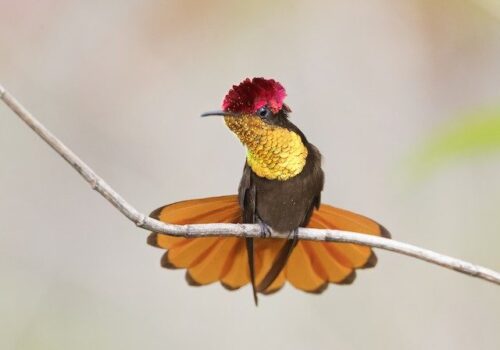
This petite size doesn’t hinder its flying abilities, as it is a skilled flier capable of hovering in mid-air while feeding on nectar from flowers.
Breeding behavior is another intriguing aspect of this species.
Male Ruby-topaz Hummingbirds are known for their elaborate courtship displays, which involve a series of acrobatic maneuvers and vocalizations to attract a mate.
These displays showcase the male’s agility and vibrant colors, making it an enchanting spectacle.
Once a female has been courted and a pair bond established, the male will continue to perform displays for her throughout the breeding season, reinforcing their bond.
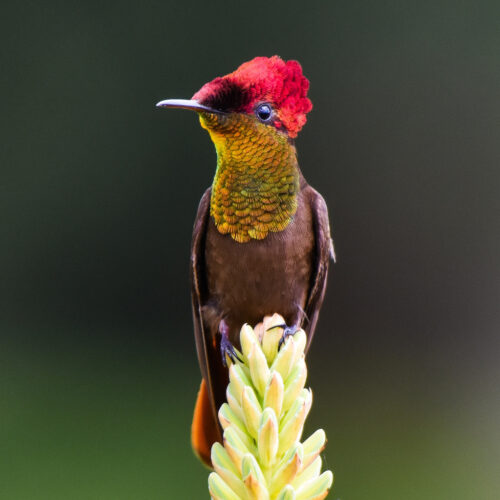
Ruby-topaz Hummingbirds are highly territorial creatures and vigorously defend their feeding and nesting territories from other hummingbirds and even larger birds.
They display particular aggression towards other hummingbird species and engage in aerial battles to protect their territory.
These battles can be intense and involve rapid movements and high-pitched vocalizations.
The territorial nature of Ruby-topaz Hummingbirds adds to their captivating behavior and demonstrates their determination to secure their resources.
Now, let’s delve into the life cycle of the Ruby-topaz Hummingbird.
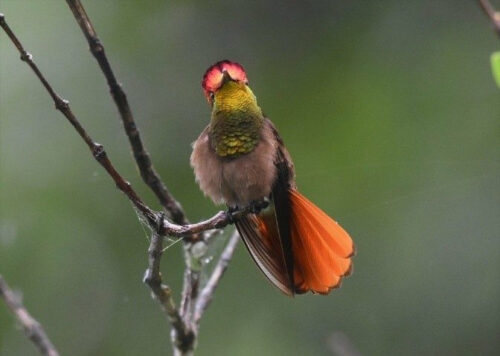
It begins with the female constructing a nest using materials such as plant fibers, spider silk, and moss. The nest is usually built on a tree branch or other suitable elevated locations, providing protection and concealment.
Once the nest is complete, the female lays two tiny eggs, each about the size of a small pea.
She carefully incubates the eggs, keeping them warm and safe until they hatch.
After an incubation period of approximately 15-19 days, the eggs hatch, revealing two helpless chicks. The chicks are born with minimal feathers and closed eyes.
They are entirely dependent on their mother for nourishment and care.
The female feeds her young a diet primarily consisting of nectar and insects, providing them with the essential nutrients required for their growth and development.
As the days pass, the chicks grow rapidly, and their feathers start to emerge.
Initially, their plumage is dull and lacks the vibrant colors of the adult birds. However, as they mature, their feathers undergo a remarkable transformation.
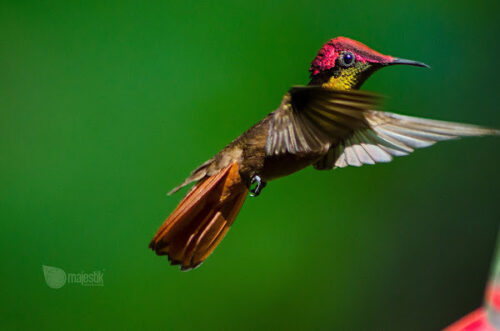
The dull colors gradually give way to the dazzling ruby-red throat and crown, along with the shimmering green feathers on their back and wings.
This transformation is a visual delight, as the chicks evolve into the breathtaking adults they are destined to become.
The young hummingbirds spend several weeks in the nest, honing their flight skills and gaining strength.
Once they have developed sufficient flying abilities and independence, they leave the nest and embark on their own journey.
They will explore the surrounding area, searching for food sources and establishing their own territories.
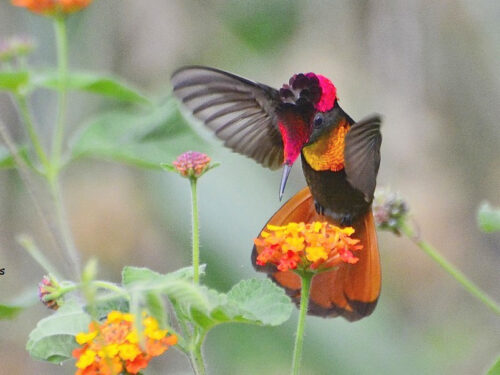
This marks the beginning of their adult life, filled with vibrant displays, territorial defense, and the continuous pursuit of nectar-rich flowers.
In conclusion, the Ruby-topaz Hummingbird captivates us with its brilliant plumage, exceptional flying skills, and intriguing breeding behavior.
Its life cycle, from the tiny egg to the graceful aviator, is a testament to the wonders of nature.
As we observe these mesmerizing creatures, we are reminded of the delicate balance and beauty that exist in our natural world.
Video:






